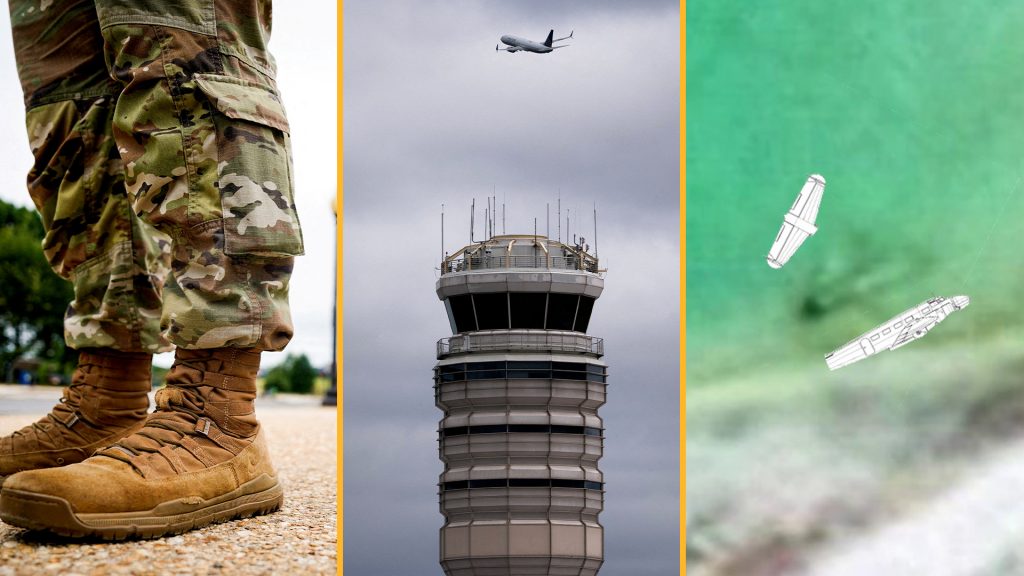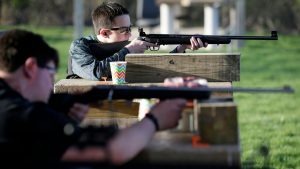You asked, we answered: Guard deployments, air travel and Earhart’s plane

From National Guard deployments to who should run America’s skies — and whether Amelia Earhart’s plane has finally been found — we’re back with another round of Straight From You.
Each week, we take your comments and questions and put them to the test — separating fact from speculation and adding the context you won’t always get in the headlines.
You said:

The question:
Why ship in National Guard from other states?
SAN answer:
Yes, every state has its own National Guard. However, Guard troops can cross state lines in two main ways.
First, governors can request help from other governors through interstate mutual-aid agreements such as the Emergency Management Assistance Compact. In these missions, troops stay under their home governor’s command but operate in the requesting state — often for disasters or large events.
Second, the federal government can get involved. The president can “federalize” Guard units under Title 10, including 10 U.S.C. §12406, to repel invasion, suppress rebellion or execute federal law. When federalized, troops operate like active-duty forces and face limits on domestic policing under the Posse Comitatus Act.
There’s also Title 32 authority, including §502(f), where troops remain under their governor but follow federally directed, federally funded missions; legal analysts note this status is sometimes used to protect federal personnel or facilities.
One exception: the D.C. National Guard reports directly to the president, not a governor.
You said:

The question:
Should the U.S. privatize air traffic control?
SAN answer:
In the U.S., that idea usually means spinning FAA’s air traffic operation into a fee-funded “public utility,” separate from the FAA’s safety regulator.
Advocates point to Canada’s NAV CANADA, created in 1996, which upgrades tech faster, and finances big projects with bonds and user fees rather than having to wait for congressional approval. The U.S. already uses private contractors at many small “contract towers,” so there is some precedent.
However, critics say that America’s airspace is far larger and more complex than Canada’s and worry a fee structure to pay controllers would be dominated by larger airlines and could sideline small airports. Congressional research comparing models abroad hasn’t found clear, across-the-board superiority for privatization.
A major push to “corporatize” Air Traffic Control (ATC) in 2018 died in Congress amid resistance from pilots and small-community advocates. Industry groups that once backed it now mostly support pouring money into FAA modernization — new equipment and aggressive controller hiring — rather than restructuring.
An ATC utility would potentially be insulated from appropriations lapses that slow FAA hiring and upgrades, but more exposed to traffic shocks.
You said:

The question:
Has Amelia Earhart’s plane finally been found or is it, just another false alarm?
SAN answer:
A new claim about Amelia Earhart’s plane is drawing scrutiny, and that’s appropriate. Purdue University and the Archaeological Legacy Institute (ALI) plan an expedition to Nikumaroro in Kiribati in November to examine a “visual anomaly” dubbed the Taraia Object. It’s visible in satellite and aerial images of the island’s lagoon. The team says it will document the site, then use magnetometers and sonar before dredging to expose and identify the object.
Newsweek reports the shape appears reflective and “aircraft-shaped” in imagery. It reports that researchers believe a 2015 cyclone may have shifted sediment to reveal it; Vantor/Maxar images were cited in their review.
“This case has taken a long time,” ALI Executive Director Dr. Richard Pettigrew told Newsweek in an exclusive interview. “But we have some new evidence. There’s an object visible in the Nikumaroro lagoon. Everything that we see indicates it’s very possible, perhaps even likely, that this is what remains of Amelia Earhart’s aircraft.”
The effort follows President Donald Trump’s directive to declassify Earhart records.
Skepticism remains. The International Group for Historic Aircraft Recovery executive director, Ric Gillespie, told NBC News his group saw “nothing there” at the spot and suggested the anomaly could be natural. The Smithsonian’s Dorothy Cochrane told Newsweek that more data is needed.
Recent history counsels caution: a widely publicized 2024 sonar target thought to resemble Earhart’s Lockheed Electra 10E was later confirmed to be a rock formation, according to CBS News.
What would move this from “intriguing” to “identified”? Clear imagery of aircraft structure, instrumented survey data and recoverable parts with identifying marks or serials that can be tied to Earhart’s Electra.
Until the expedition produces that level of evidence, the only responsible verdict is “unproven.” But remember, that’s science — testing, ruling out and following the data until something real remains.
Keep dropping comments, asking questions and SAN will tackle the biggest ones next week on Straight From You.
The post You asked, we answered: Guard deployments, air travel and Earhart’s plane appeared first on Straight Arrow News.





